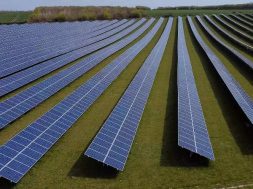
Scientists showcase how to create low-cost solar cells
NEW YORK: A team of scientists at Stanford University, including a researcher of Indian origin, has shown how nanotechnology can be used to create crystalline silicon (c-Si) thin-film solar cells that are more efficient at capturing solar energy.
The discovery can reduce the cost of solar energy production globally, they noted.
Dr Shrestha Basu Mallick, working with her advisors Dr Mark Brongersma and Dr Peter Peumans, developed a new method of producing a cheaper and more efficient solar cell.
The team used optical modelling and electrical simulations to show that a thin-film crystalline silicon solar cell with a 2D nanostructure generated three times as much photo current as an unstructured cell of the same thickness.
This is because the nano-structured surface traps incoming light more effectively causing it to spend more time within the silicon material.
The longer the light spends inside the solar cell – the greater its chance of getting absorbed.
“Light absorption in crystalline silicon solar cells can be significantly enhanced by nanostructuring and this reduces the thickness of silicon required,” said Dr Basu Mallick.
“This is important because it helps countries be competitive against imported cells and paves the way for new solar applications such as flexible or transparent cells,” she added.
The discovery reveals a simple method to improve the efficiency of all silicon solar cells.
The work was published in the journal Optics Express and has garnered close to 200 citations including multiple book chapters.
Source: PTI
Related posts:
- REC Silicon Minutes From Annual General Meeting 2017
- Hanwha Q CELLS celebrates one billion Q.ANTUM solar cells
- SINGULUS TECHNOLOGIES Signs New Contract for Delivery of Several Vacuum Sputtering Machines for CIGS Solar Modules
- Meyer Burger concludes divestment of wafer business to Precision Surfacing Solutions













